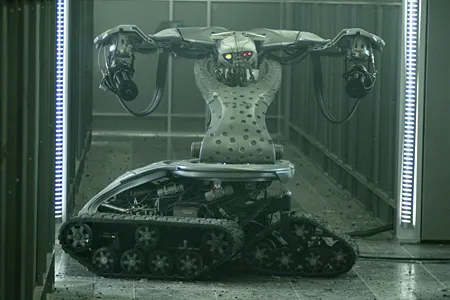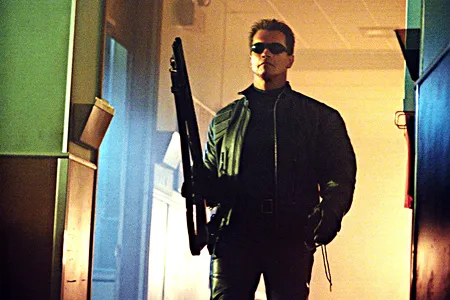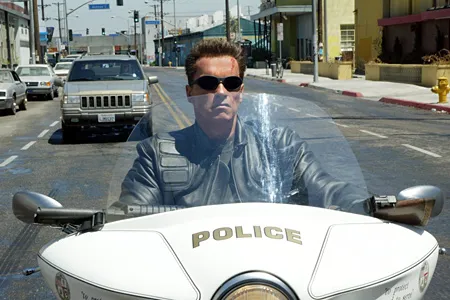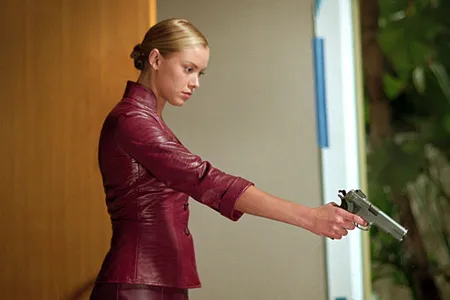The Terminator Saga Continues: A Look Back at “Terminator 3”
The prospect of continuing the blockbuster “Terminator” saga was always a tantalizing dance in Hollywood. “Hey, Arnie, what about ‘Terminator 3’?” was the constant refrain. The aging Austrian action star would play along, “Call Jim, he promised to sort out his ships and icebergs and get right on it.” “Mr. Cameron, what are your future plans? Do you plan to film ‘Terminator 3’?” – “I don’t know, I don’t know. I have a lot of interesting ideas I’d like to work on first.” Then, whispers started circulating around the studios: the infamous Kassar-Vaina duo were up to something.

The Return of Kassar and Vaina
To understand their role, we need a little background. In 1982, they founded “Carolco Pictures,” giving a start not only to the killer robot but also to controversial figures like John Rambo and the Universal Soldier, Jean-Claude Van Damme. Under their wing, besides Cameron, were such iconic directors as Oliver Stone, Franco Zeffirelli, Roland Emmerich, Renny Harlin, Walter Hill, and Roger Spottiswoode. They essentially popularized the trend of muscular guys with bare torsos and automatic weapons, and the decline of that trend, coupled with global shifts in the international climate, led to their bankruptcy. Weak attempts to find new themes resulted in two consecutive flops – “Showgirls” and “Cutthroat Island” – burying “Carolco” and a small era in American cinema.
Now, Kassar and Vaina were back in action. Their new company, “C2,” with a similar logo, made their intentions clear: they had returned! Five years after their seemingly irreversible political demise and ten years after the triumph of “Terminator 2.” Known for their boundless ambitions, casual attitude towards money, and stubbornness, they began to revive their old playbook.

Behind-the-Scenes Drama
Jim Cameron was hesitant, demanding creative freedom, final cut rights, a percentage of the box office, and ownership of all future sequels? Who did he think he was? The director of the highest-grossing film in history? Great, then he probably didn’t need the money; let him find a quieter job. They’d replace him with someone more agreeable, maybe not as famous, but someone who would work diligently. Edward Furlong had grown up and wanted a seven-figure salary plus a percentage of the box office? Did he think he was Tom Cruise?! They’d replace him with any reasonably good-looking kid from the hundreds knocking on casting agencies’ doors, maybe even someone unknown. And they’d tell the press that Furlong was an alcoholic and drug addict, and they couldn’t risk the project’s fate on his doctors. Let everyone see what happens to those who want too much too soon. They’d also hint to Mr. Cigar Smoker that they could find someone just as good for his role: with the same muscles, but half the age. Endless auditions continued even at night.

An equally intense behind-the-scenes struggle was happening on the other front: writers and artists were hired and fired, additional funds were raised, sets and props were scrapped, studios were rented and left idle, and the script was rewritten multiple times each day. The competition in numbers between the producer and writer teams was fierce, reminiscent of having too many cooks in the kitchen. Expenses soared past $50 million before a single frame was shot, and only Schwarzenegger remained from the original cast; even Linda Hamilton wasn’t on board. Putting all these movements together, critics and moviegoers delivered a unanimous verdict: the patient was more dead than alive. Expectations for the premiere were low.

A Pleasant Surprise
That’s what made it so pleasant to be wrong. The film is easy to watch but keeps you engaged, demanding attention at times. Despite the seemingly casual treatment of the original source material, sometimes bordering on sarcasm, loyalty to the traditions is paramount. Like the first two films, “Terminator 3” is structurally a classic road movie, generously spiced with shootouts, fights, chases, and explosions. Furthermore, the plot is so close to the second part that it could be considered both a sequel and a remake, although the final surprise makes you regretfully abandon that tempting idea.
Some might say the writers overdid the humor. Indeed, from the first scenes of both robots appearing in our present, the level of irony (and self-irony) reaches almost comedic heights. This irony is sometimes straightforward, sometimes only understandable to true fans of the now trilogy, or to the most dedicated viewers who bothered to rewatch the second part before seeing the third. By the finale, however, the atmosphere noticeably darkens, culminating in complete hopelessness in the final frames, only illuminated by a clear hint at another sequel. Overall, the film leaves a very solid and voluminous impression, which is surprising given its troubled production history.

Action and Performances
There are no complaints about the action scenes; everything is done to the highest standard, like in the good old days. Drawing heavily on Cameron’s characteristic style, Jonathan Mostow, no newcomer to the craft, focused on sets, pyrotechnics, and masterful editing, resorting to pure CGI only where necessary, and it paid off: the most incredible shots, where a heavy crane races through the city, destroying everything in its path, were filmed with minimal computer graphics, making them look very realistic. The only weak point, where Cameron traditionally excels, is the coherence and clarity for the viewer of some particularly chaotic scenes, for which detailed storyboarding seems to have been sacrificed for time and money. There’s no point in criticizing the acting either, especially since everything is quite successful in that area: the relationship lines between John Connor and Kate Brewster, and between T-101 and T-X, develop harmoniously, fully in line with the director’s vision. And while the film doesn’t quite reach the heights of Cameron’s previous works (who expected it to?), its independence and intrinsic value are beyond doubt.

In any case, the time spent watching the new adventures of the Terminators is by no means wasted.
The desire to reach for the scissors and cut out a particular episode rarely arises; viewers follow the unfolding events with interest and don’t want to fall asleep. This is a rare treat this summer.ksenov